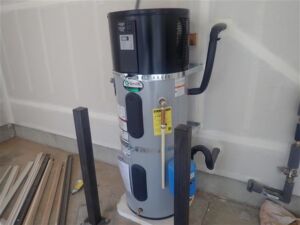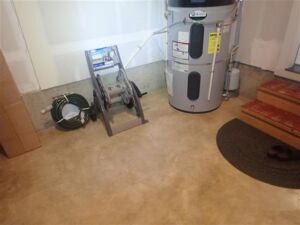
The IRC (International Residential Code) requires physical protection for water heaters and furnaces installed in locations susceptible to vehicle impact. A concrete filled metal bollard, anchored to the floor, is the most common method of protection. An approved curb or wheel barrier may also be installed. A damaged furnace or water heater, particularly when gas fired, can be a significant safety hazard. Additionally, an appliance damaged by vehicular impact will likely need to be repaired or replaced, which can be costly.
In Oregon, impact protection must be provided when a furnace or water heater installed on the back wall of a garage is less than 48 inches from the ground. Protection must be provided if the appliance(s) is within 36 inches to the left or right of the normal driving path. If the height of the vehicle door is 7 feet 6 inches or lower, the appliance must have protection if installed less than 36 inches above the floor.
Bollards must be 48 inches in length by 3 inches in diameter, embedded in a concrete pier at least 12 inches deep. Or 36 inches in length by 3 inches in diameter, welded to an 8”x8” steel plate and bolted to the floor with 4.5-inch concrete anchors. Bollards should be made of schedule 80 steel pipe or be pre-manufactured steel filled with concrete. Bollards must be located a minimum of 6 inches from the appliance.
Wheel barriers must be 4 inches in height by 5 inches in width by 70 inches in length. They must be made of concrete or polymer and be anchored to the garage floor.
In addition to furnaces and water heaters in a garage, gas meters and other combustion components on the exterior of the home that are vulnerable to vehicle impact must be protected.
The installation of a bollard or curb is a relatively inexpensive addition to a garage and can bring peace of mind for homeowners. We recommend checking your garage and gas meter for the presence or need for vehicular protection. If a bollard or curb is needed, you should have one installed by a qualified contractor.

